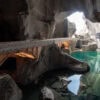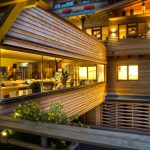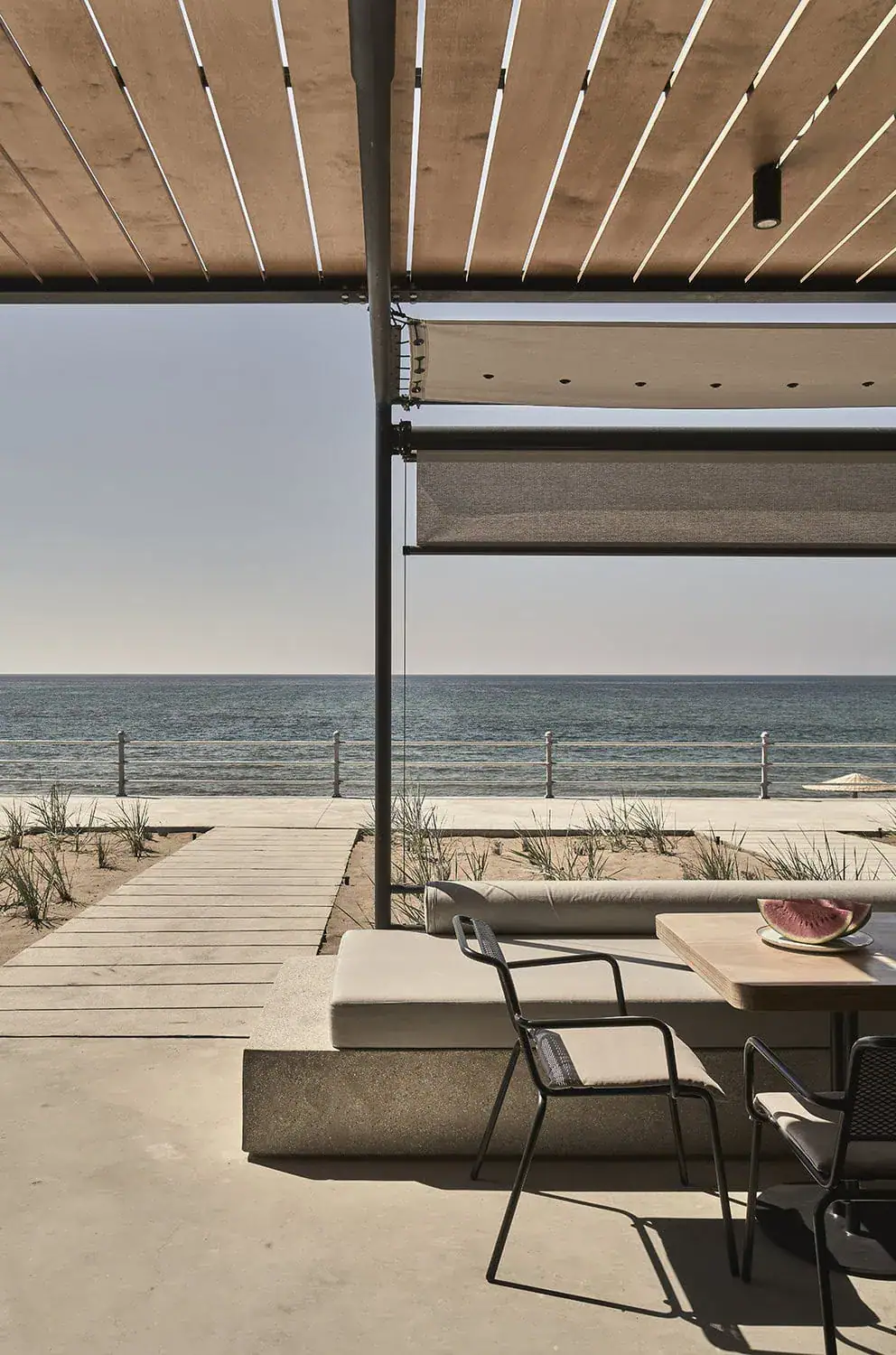The Reef Restaurant on the Chinese island of Shengshan is a project by Benedetta Tagliabue that celebrates the sea and coastal landscape as well as cultural heritage. Local materials and wood are to play a key role.
Houtouwan, a village on the Chinese island of Shengshan, has become famous: the ‘Chinese ghost village’ has already been featured in documentaries on CNN and in National Geographic magazine. Hidden between the hills and cliffs of the Zhoushan-Archipelago, the largest fishing area in China, the former fishing village experienced its heyday from the 1950s onwards.
At the end of the 20th century, the approximately 3,000 inhabitants gradually left the village – probably because the fishing stocks had declined, life there was considered too arduous and life on the mainland seemed more attractive.

Today, the place called ‘wurencun’ (‘village without people’) by the locals is being reclaimed all the more passionately by nature. The green ghost village of Houtouwan with its overgrown houses and winding paths is therefore considered a paradise for photographers. In addition to the enthusiasm for the fantastic motifs, Houtouwan also triggers a quiet melancholy.
Development project in dialogue with nature and culture
However, the local administration has big plans for Shengshan Island as a whole – the archipelago is subordinate to the district-free city of Zhoushan. It is to be transformed from a historic fishing base into a ‘high class’ destination for island tourism, sea fishing and culture. One of the projects is the Reef Restaurant, for which Benedetta Tagliabue and her architecture studio EMBT have submitted a design.

As part of an international architecture competition at the end of 2023, renowned offices were invited to design the vision of the ‘Island of Fisheries’. KCAP, EMBT and MVRDVreached the final. They designed a series of buildings that celebrate marine fishing and create tourist attractions.
Maritime highlights for anglers and nature lovers
The island was already an important transshipment centre for aquatic products during the Ming and Qing dynasties. Shengshan, the Zhoushan and Shengsi archipelagos, lie south of the mouth of the Jangtse, the longest river in the People’s Republic of China. The journey from Shanghai to Shengshan takes between three and five hours in total, taking a ferry from Shanghai’s Yangshan deep-sea harbour to Shengsi Island and then to Shengshan.
In addition to the Reef Restaurant, the planned ‘highlights of the modern era’ for Shengshan include a museum with an exhibition hall for fishing culture and the maritime history of the archipelago as well as the ‘Anglers’ Block”: this will be a multifunctional centre with fishing clubs, shops for fishing supplies and equipment as well as cultural offerings.
The aim of the seven new buildings and service facilities, including catering, is to appeal to different target groups: From professional anglers and novice anglers to tourists who want to experience the natural beauty and cultural uniqueness of Shengshan.
Reef Restaurant: Homage to the sea
The Reef Restaurant, designed by Benedetta Tagliabue, combines architeckture, nature and cultural heritage in an extraordinary way. Inspired by the ‘scaffolding’ of aquatic vertebrates, i.e. fish, the building presents itself as a natural extension of the rugged rocky coastline. Respect for the environment, cultural continuity and sustainability take centre stage.


The architecture of the Reef Restaurant picks up on the organic patterns and structures of the sea. The curved lines and open design also symbolise the connection between man and the ocean.
‘The aesthetics of fish bones’
The restaurant will offer a variety of experiences on two levels: On the ground floor, guests can watch the chef prepare freshly caught seafood in a VIP area. On the upper floor, the ‘aesthetics of fish bones’ can be experienced through the interior design: the dining area conveys the feeling of being inside a fish belly – and all around, guests have an impressive panoramic view of the sea.

The planned Reef Restaurant is clearly more than just a culinary venue. With its shell or fish-like shape, it is a cultural landmark in honour of the maritime life around Shengshan Island. Together with the neighbouring Museum of Fishing Culture and the modular Anglers’ Block, it forms a unit that can combine tradition and modernity.
Protecting the fragile balance of the marine ecosystem
Benedetta Tagliabue emphasises sustainability. ‘From the use of local and natural materials such as wood to energy-efficient design features, we strive to minimise the impact on the environment while preserving the natural beauty of the island for future generations,’ says EMBT.
The architecture is intended to integrate seamlessly into the landscape. The use of regional resources is intended not least to protect the fragile balance of the coastal and marine ecosystem. The building is of course visually impressive, but Tagliabue also wants it to convey ecological awareness.
Text: Linda Benkö
Renderings: Playtime / EMBT









